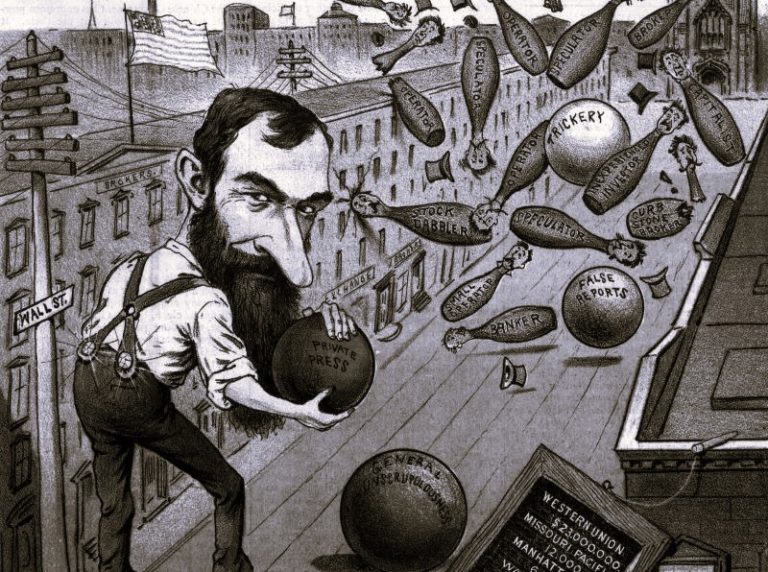

By Dr. Robert J. Kreuz
Associate Dean and Professor of Psychology
University of Memphis
Satire as Criticism
Indeed, condemnation of satirists has more commonly taken the form of censorship, public humiliation and imprisonment.
Aristophanes, who wrote satiric plays 2,400 years ago, was condemned during his lifetime for his depictions of citizens of Athens. Plato criticized the playwright for slandering Socrates as vain and arrogant in his play “The Clouds.”

In 1599, the bishops of Canterbury and London banned the publication of a variety of works, including those seen as satirical. Attacks on the privileged and powerful were seen as violating cultural norms and corrosive to social order.
And years before writing his best-known work, “Robinson Crusoe,” Daniel Defoe wrote satirical works that were critical of many prominent figures. Among his more popular work was “The True-Born Englishman,” which highlighted xenophobic prejudice in England against King William III, a Dutchman by birth.
In 1703, Defoe also criticized individuals who wanted to separate from the Church of England. In “The Shortest Way with the Dissenters” he accused separatists of being responsible for the English Civil War, among other crimes. Since Defoe was himself a separatist, his critique is considered to be a satiric attack on the leaders of the Church.
Defoe’s call to “crucify the thieves,” that is, the dissenters, led to him being accused of seditious libel. He was fined, endured public humiliation in a pillory and was then thrown in prison.
Authors of what is known as Juvenalian satire, criticism of contemporary persons or institutions, engage in a full-throated condemnation. In appearing to be advocating for the public good, they could also end up with outlandish suggestions. Perhaps the best-known example of this is Jonathan Swift’s 1729 essay, “A Modest Proposal,” in which he suggests that the Irish sell their babies as food for the rich. It was an attack on the attitudes of the wealthy and on British policies toward the Irish.
Needless to say, assaults like these can get under the skin of those being depicted as corrupt, cruel or dimwitted.
Mild or Hidden Satire

But there isn’t one form of satire. Satire can be fairly gentle as well. An example of so-called Horatian satire is Alexander Pope’s 1712 “The Rape of the Lock.” The poem describes a mundane incident – the cutting of a lock of hair without permission – in mock-heroic terms.
Pope’s poem is relatively good-natured. His goal was to poke fun at his own society and is therefore not particularly judgmental.
Then there is the use of caricature as a form of satire, which often gets away merely by exaggerating the physical characteristics of its intended targets. Barack Obama’s ears and Richard Nixon’s nose, for example, were often depicted as comically large by cartoonists during their respective presidencies.
But then, a work intended to be satiric may cease, over time, to be recognized as such. As I describe in my book on irony and sarcasm, an example may be the Historia Augusta, a fourth-century collection of biographies of Roman emperors.
Scholars Justin Stover and Mike Kestemont have pointed out that the manuscript is unusual in its “lurid focus on emperors’ peccadilloes and personal habits to the detriment of their political accomplishments.” There has been some discussion over the intent and purpose of such a text. Scholar Shawn Daniels, who has studied the text closely, concluded that the language of “quips and bad puns” suggest that the work was intended as satire.
Free Speech and Satire
In modern times, the liberty of free speech can often protect even harsh examples of satire.
In the U.S., for example, criticism of public figures is protected speech, so satire cannot be used as a basis for libel or to seek damages for emotional distress. In countries such as Italy and Germany, satire is explicitly protected by the Constitution. And France has a long tradition of satirists mocking religious and political institutions.
With regard to Charlie Hebdo’s caricatures of the prophet, there are those who question whether religious sentiments should not be taken into consideration. Many have described the caricatures, such as one depicting a bomb hidden in a turban, to be offensive to religious feelings and in poor taste. There have been protests across several countries condemning the republication.

In an editorial that accompanied the caricatures, the magazine has defended its actions. The editors stated that the drawings “belong to history, and history cannot be rewritten nor erased.”
Support for freedom of expression was evident in the slogan “Je Suis Charlie,” or “I am Charlie,” which was adopted by thousands soon after the attack in 2015.
Are there limits to such freedom of expression? The future of satire as a form of criticism may depend on a balance being struck between its practitioners and its targets.
Originally published by The Conversation, 09.15.2020, under the terms of a Creative Commons Attribution/No derivatives license.







